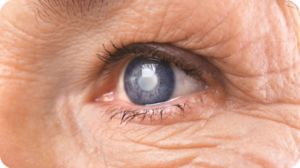Ayurveda—and, specifically, Ayurvedic medicine—is a whole-life approach to wellness. The English translation of the word itself provides insight into the practice: ayur means “life”, and veda “means “knowledge”. The roots of the practice are spiritual, lying within the sacred Indian scriptures called the Vedas.

Focusing on preventative health and natural healing, Ayurvedic practice also encompasses a simple philosophy of how to actually live a fulfilling life. In the view of practitioners and Ayurvedic proponents, the two can’t be separated.
Although considered “alternative” and “complementary” medicine in the United States, Ayurveda is mainstream and widely accepted throughout India. Its history in that country dates from the practice’s founding several thousand years ago. Modern Indian Ayurvedic practitioners are licensed and certified by the state.
Practitioners believe that the human body is composed of five elements (or “bodies”)—earth, air, fire, water, and space. Earth and water are associated with food, air and space with wisdom or primordial spirituality, and fire with the mind and the mental state. Those elements or bodies create three types of energy (doshas) in the body. These include: kapha dosha, pitta dosha, and vata dosha.
- Kapha. Associated with water. It is contained by the “earth” of the body and is essentially the moisturizing and lubrication function of anatomy—keeping joints, skin, and cells properly hydrated, as well as healing wounds. The body type for Kapha is stocky and full-form.
- Vata. Associated with air. This is considered the most dominant dosha. It controls the nervous system, movement, and the actual life force of the body. The body type represented within Vata is what Westerners would call skinny.
- Pitta. Associated with fire. Pitta balances or moderates the forces of the other two doshas. It controls metabolic processes, including the hormonal system, modulating internal temperature, and controlling specific bodily activities such as digestion. Pitta is associated with a medium body type—neither skinny nor stocky.
These are overly basic descriptions of what are extremely complex foundational concepts in Ayurvedic theory. In fact, each dosha’s main—or dominant—association is contained within a secondary element. Each dosha is made tangible through five different forms. The system becomes only more complicated from there.
Ayurveda has been called “Life in Balance.” This is because the philosophy seeks to rectify imbalances between bodily systems, psychological factors, spiritual issues, and the external environment. Ayurvedic practitioners believe these are inextricably intertwined and one should not be considered in isolation from the others. Treatments focus on restoring balance to the patient’s body and life.
An Ayurvedic treatment plan is likely to begin with dietary changes, and possibly even a cleanse or fast. Food is the preferred medicine of Ayurveda (not surprisingly, given that it was developed at a time in history when there simply were no drugs to treat illness). Adjustments address both how and what the patient eats. Although the basis of Ayurvedic nutrition is vegetarianism, non-vegetarians can be treated and benefit from recommended life changes.
Ayurvedic practitioners have many tools in their tool box. They start by taking a detailed medical history. They may subsequently recommend herbal remedies, breathing exercises, chanting mantras, massage, specific yoga postures, or other alternative holistic practices, such as acupuncture.
Ayurveda has shown the most potential as a preventative practice. Research to date has focused on the impact Ayurvedic treatments can have on heart health and reducing cardiac risk factors. Keep in mind that it is difficult for any research to prove a negative, such as how given treatments and lifestyle changes correlate to the non-occurrence of disease.
Many Ayurvedic treatments also relieve stress in both the body and mind, fostering calmness and an overall sense of well-being. The focus on dietary changes, natural ingredients, and a vegetable-heavy diet can impact health concerns from weight control to cancer prevention.
Finding the right Ayurvedic practitioner is key to getting the most out of your treatment. It’s also essential to avoiding some of the less desirable aspects of the practice in the United States. Researchers have found heavy metals and other toxins in certain supplements and preparations sold as “Ayurvedic remedies.” For instance, research in 2015 found that almost a quarter of Ayurvedic supplements tested contained measurable levels of lead or mercury. That’s why it’s wise to avoid self-treatment with Ayurvedic supplements. As with all things health, it pays to be a wary and cautious consumer.
Research any Ayurvedic practitioner you’re considering. There are a number of respected certifying organizations in the United States, such as the National Ayurvedic Medical Association (NAMA) Certification Board, the Minnesota Institute of Ayurveda, and the California College of Ayurveda. Approaches, knowledge, and training vary widely among practitioners. It’s always worth keeping in mind that Ayurveda is a “complementary” medicine; investigate the methods potential practitioners use, their philosophy, and how comfortable they will be interacting with your traditional healthcare providers.







